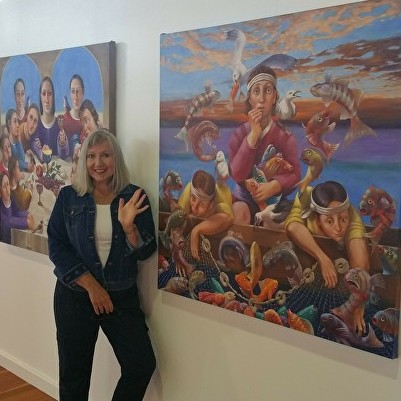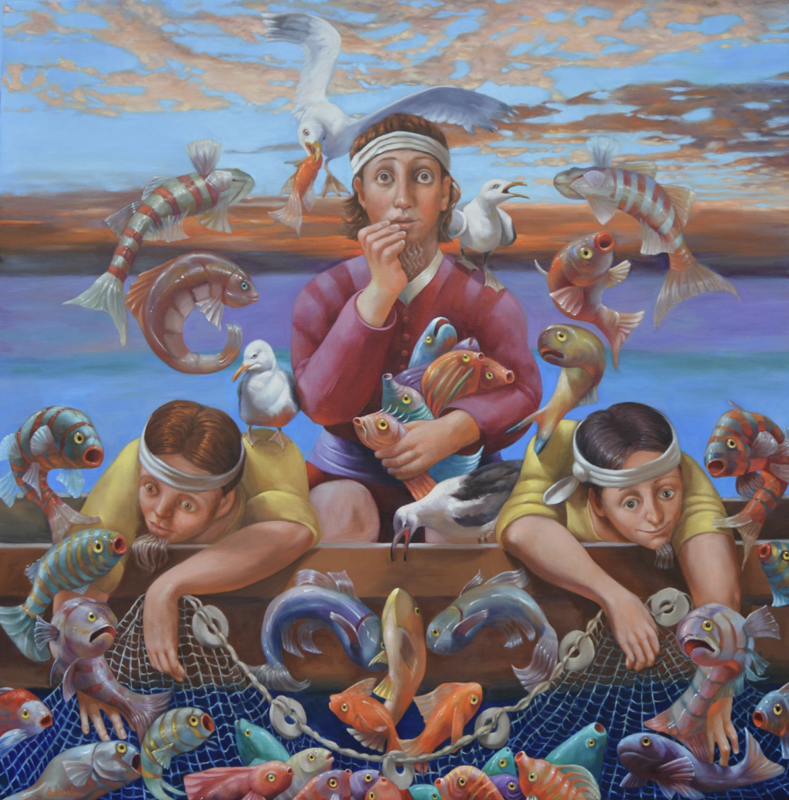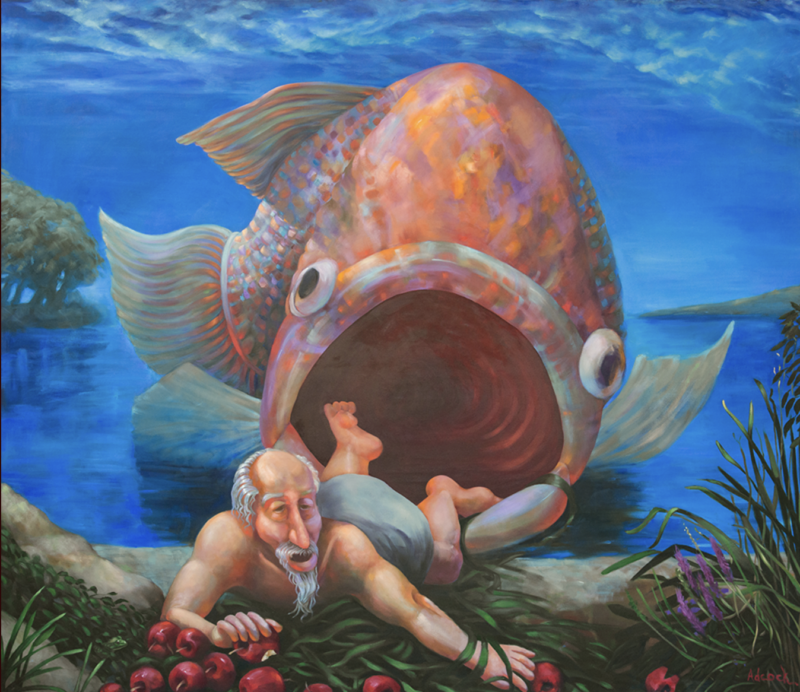Rosemarie Adcock is an artist and founder of the charitable organization Arts for Relief and Missions, which uses fine art and music for national and international humanitarian efforts. In an interview with Fine Art Shippers, she shared her story of growing up in an immigrant family and her understanding of the Bible reflected in her paintings, as well as her work helping widows in Uganda.
Artist Talk: Rosemarie Adcock on Her Biblical Art and Charity Work
How did your German and Austrian origin influence your work as an artist? How do the European and American traditions mix in your art?
Rosemarie Adcock: As the child of German and Austrian immigrants, I often felt like I was standing with one foot in each country. My parents arrived in the United States as Displaced Persons just two weeks before I was born. Their stories of the war, of bombings and displacement, had a profound effect on me. My father was drafted into Hitler's army and sent to the Russian front when he was just seventeen. Those experiences shaped their personalities and, in turn, my upbringing; they became a part of my consciousness, feeding into my perspective as an artist.
Growing up, I often felt like an outsider in America, observing its culture from the sidelines. My parents' unfamiliarity with American systems—like the education system— proved challenging for me, as I had to navigate the path to college and beyond on my own.
My gaze as a painter was always drawn to Europe, despite being physically in the United States. I had an understanding of the political landscape in Europe and Russia, unlike many American kids of my generation. This awareness stemmed from my bilingual background—German was my first language—and from the tales of wartime Europe that my parents shared. Because of that, I always felt a deep connection to the immigrants who arrived in the U.S., their lives uprooted by the tumultuous political conditions in their home countries.
I suppose this empathy with immigrants was, among other things, became an inspiration for your Russian series depicting refugees from the Soviet Union. Is that so?
In 1988, I worked closely with displaced individuals who escaped the Soviet communist regime. I met them while they were in Ladispoli, Italy, awaiting their assignments to new countries—some were to be sent to the United States, others to Canada or Australia. I was aware of the challenges they faced—having to abandon everything they knew and restart their lives in completely foreign environments. As an artist, I sought to capture their fate and their hardships in my paintings, which were accompanied by texts narrating their stories.
What began as a set of 26 paintings grew over time to include 120 artworks, exploring the downfall of communism in the Soviet Union. The series toured The United States and Europe for seven years, attracting large audiences.
Let’s now move on to your Biblical series. Unlike the Renaissance or subsequent centuries, where a specific canon for religious painting existed, such a canon is absent today. As an artist, you had to differentiate yourself from earlier traditions when depicting Biblical narratives. How did you develop your own style?
It was a long process, influenced by my training in impressionistic, direct-method painting, and life-drawing techniques. Being single-sighted, I lack depth perception, which makes color especially important in my art. While studying in Germany and working on monumental-size paintings, at some point, I found myself in a creative crisis. I was amidst artists who did abstract and expressionist painting, which I felt wasn’t for me. I consistently found a figure emerging from my large abstract paintings.
Gradually, I turned my eyes to Biblical narratives as a subject matter to explore. My first painting in my Biblical series was a depiction of Adam and Eve being expelled from the Garden of Eden. I brought humor into the scene by making the figures look goofy. I sought to create a Biblical series that was faithful to the original texts, respecting their theology, and their narratives' original intent. I also wanted to infuse humor into these stories, such as a goat eating Joseph's clothes in the Nativity scene or a fox biting Noah's toe in a depiction of the Ark's construction.
You describe your art as a part ancient, part future story. Could you expand on this vision?
The Bible, particularly the Old Testament or Jewish scriptures, includes various narratives that point to the arrival of a Messiah. The Old Testament stories often feature figures who symbolize Christ, known as "types of Christ," for example Moses, Joshua, and Jonah. For instance, Jonah's experience of being swallowed by a fish and reemerging after three days symbolizes Christ's death and resurrection. The entirety of the Old Testament can be seen as a foreshadowing of Jesus Christ. He himself refers to these instances, using them as symbolic representations of his life and purpose.
While the past and His life converged, His promises also pointed towards a future that is yet to come, wherein He will return as a righteous, omniscient king. We all live in anticipation of this promised future, which is beyond our current perception. Through my paintings, I aim to narrate these past stories and bridge the Old and New Testaments, demonstrating that they are an interconnected whole.
Can you elaborate on the non-profit Arts for Relief and Missions you established in 1993? What is your focus today?
Arts for Relief and Missions was initially established as a response to people's desire to help Russian refugees, whose hardships were depicted in the series I mentioned earlier. This led to substantial donations, including seeds and vitamins, which were sent to Moscow and distributed across Russian regions.
Over the years, we've expanded our humanitarian efforts and now primarily focus on aiding widows in Uganda, helping them to start businesses, such as bakeries. These initiatives aim to provide widows with stable income sources, and we aspire to open a Widows’ Center, offering medical, dental, and legal assistance, as Ugandan widows often face destitution following their husbands' deaths.
In addition, we have a project called "Chapel Galleries," which combines an art gallery and a church. It is a non-traditional religious setting where we host discussions about the paintings and the Bible. Currently, we're continuing to work on this project and aim to generate funds by selling reproductions of the paintings to support the gallery's operations.
Interview by Inna Logunova Photo courtesy of Rosemarie Adcock Images: Paintings from the Russian and Biblical series



